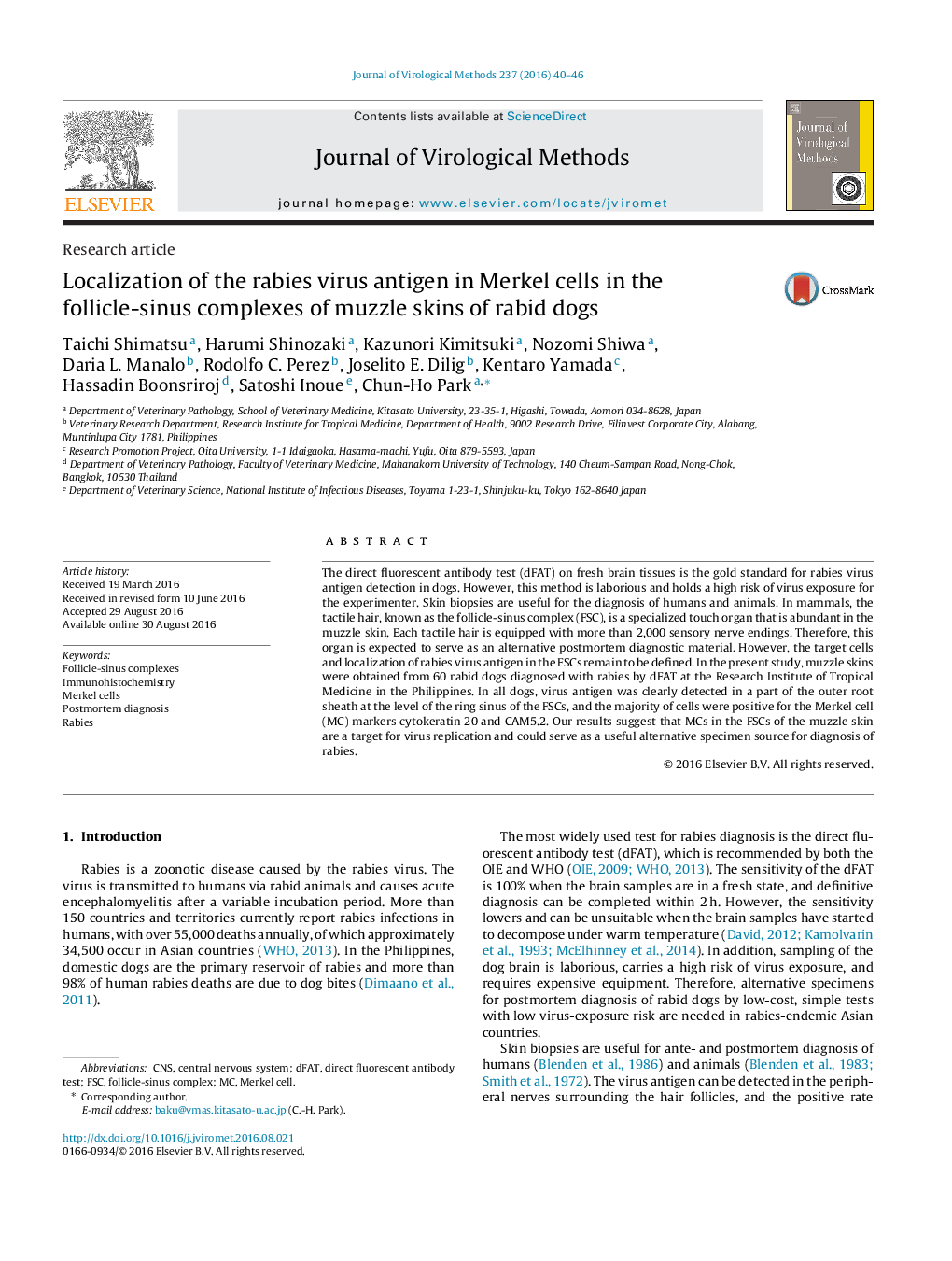| Article ID | Journal | Published Year | Pages | File Type |
|---|---|---|---|---|
| 6132659 | Journal of Virological Methods | 2016 | 7 Pages |
Abstract
The direct fluorescent antibody test (dFAT) on fresh brain tissues is the gold standard for rabies virus antigen detection in dogs. However, this method is laborious and holds a high risk of virus exposure for the experimenter. Skin biopsies are useful for the diagnosis of humans and animals. In mammals, the tactile hair, known as the follicle-sinus complex (FSC), is a specialized touch organ that is abundant in the muzzle skin. Each tactile hair is equipped with more than 2,000 sensory nerve endings. Therefore, this organ is expected to serve as an alternative postmortem diagnostic material. However, the target cells and localization of rabies virus antigen in the FSCs remain to be defined. In the present study, muzzle skins were obtained from 60 rabid dogs diagnosed with rabies by dFAT at the Research Institute of Tropical Medicine in the Philippines. In all dogs, virus antigen was clearly detected in a part of the outer root sheath at the level of the ring sinus of the FSCs, and the majority of cells were positive for the Merkel cell (MC) markers cytokeratin 20 and CAM5.2. Our results suggest that MCs in the FSCs of the muzzle skin are a target for virus replication and could serve as a useful alternative specimen source for diagnosis of rabies.
Keywords
Related Topics
Life Sciences
Immunology and Microbiology
Virology
Authors
Taichi Shimatsu, Harumi Shinozaki, Kazunori Kimitsuki, Nozomi Shiwa, Daria L. Manalo, Rodolfo C. Perez, Joselito E. Dilig, Kentaro Yamada, Hassadin Boonsriroj, Satoshi Inoue, Chun-Ho Park,
